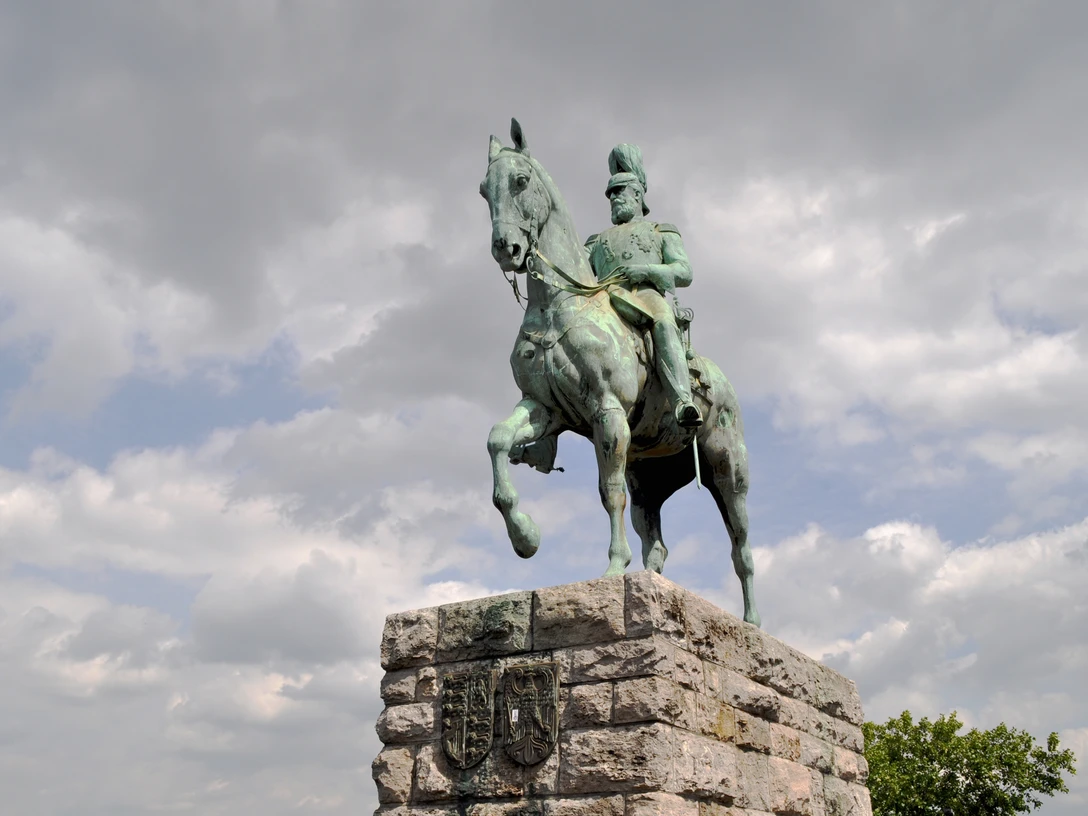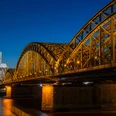- Photos & Map
How would you like to arrive?
- Details
- Useful Information
- Nearby
He reigned for barely 3 months, exactly 99 days, before a disease took him, a disease that, unfortunately, also afflicted the late Sigmund Freud: laryngeal cancer. Despite intensive treatment, German and British doctors could not halt the severe illness diagnosed in Friedrich III as early as 1887, and thus his enthronement on March 9, 1888, was already overshadowed by the weakness caused by the disease.
He is said to have remarked to a close confidant, “If I ever reign, Germany shall have a constitution like England’s.” As Crown Prince, he was known as an admirer of constitutional monarchy – and his statement further reflects his deep connection to his wife Victoria, the daughter of British Queen Victoria, as well as his progressive views for the time. He hoped to modernize Germany and introduce greater civil liberties. Despite his brief reign, his liberal spirit and vision remain unforgettable – thanks also to the equestrian statue by the Hohenzollern Bridge.
When you gaze at the love locks on the bridge – located near the cathedral and main station – the equestrian statue of Emperor Friedrich III is sure to catch your eye. But – don't get confused: there are a total of four different equestrian statues. To three different emperors – and one king.
Currently, Cologne leans toward the second option: preserving the equestrian statues as witnesses of history and cultural artifacts – accompanied by informative and educational content.
Friedrich I was the first King of Prussia in 1701. He was followed by the “Soldier King,” Friedrich Wilhelm I. Then came the well-known Friedrich the Great, also known as “Friedrich II,” who significantly influenced Prussia through reforms and military successes – reigning from 1740 to 1786.
The equestrian monument of King Friedrich Wilhelm III, who led Prussia through the Napoleonic Wars, stands once more the Heumarkt since 2009. He reigned over Prussia from 1797 until his death in 1840. Emperor Friedrich III, the 99-day emperor, reigned in 1888. He was succeeded by the last German Emperor, his son, Emperor Wilhelm II. It might seem confusing to some, but even the last emperor’s full name includes a “Friedrich” – being Friedrich Wilhelm Viktor Albert of Prussia from the House of Hohenzollern.
Back to Cologne: the Hohenzollern Bridge is named precisely after these Hohenzollerns. Although these Hohenzollerns ceased to provide rulers after the November Revolution and played no political role in Germany after 1918.
He is said to have remarked to a close confidant, “If I ever reign, Germany shall have a constitution like England’s.” As Crown Prince, he was known as an admirer of constitutional monarchy – and his statement further reflects his deep connection to his wife Victoria, the daughter of British Queen Victoria, as well as his progressive views for the time. He hoped to modernize Germany and introduce greater civil liberties. Despite his brief reign, his liberal spirit and vision remain unforgettable – thanks also to the equestrian statue by the Hohenzollern Bridge.
Equestrian Statue: in Honor of His Liberal Views
The monument honoring the 99-day emperor consists of a bronze equestrian-and-horse combination resting on a massive granite base. The emperor is depicted in a military uniform, meticulously rendered in a dignified and determined posture. The figure was created by Louis Tuaillon, a renowned German sculptor.German Equestrian Statues: Monuments to Germany's Fortunes
Not only Cologne and the Hohenzollern Bridge are characterized by equestrian statues; such symbolic monuments were erected throughout Germany in the 19th century as honorary monuments in many cities. They gained particular significance after the Napoleonic Wars, combining a political message with artistic expression, as they commemorate historical figures who shaped the fate of the country.When you gaze at the love locks on the bridge – located near the cathedral and main station – the equestrian statue of Emperor Friedrich III is sure to catch your eye. But – don't get confused: there are a total of four different equestrian statues. To three different emperors – and one king.
Controversial Cultural Artifacts – Witnesses of a Different Era
Today, the equestrian statues in Cologne – as in other German cities – are the subject of heated debates about how to deal with the Prussian heritage in public spaces, especially with regard to colonialism and militarism. This is particularly relevant in the context of monument removals and the Black Lives Matter demonstrations. Tear them down? Erase history? Or: refuse to look away, explain, and promote historical awareness? Which approach serves the cause best?Currently, Cologne leans toward the second option: preserving the equestrian statues as witnesses of history and cultural artifacts – accompanied by informative and educational content.
Emperor or King: The Dynasty of the Hohenzollerns
The name “Friedrich” appears frequently in the history of German kings and emperors, and it's not easy to distinguish between them. All the “Friedrichs” originated from the House of Hohenzollern.Friedrich I was the first King of Prussia in 1701. He was followed by the “Soldier King,” Friedrich Wilhelm I. Then came the well-known Friedrich the Great, also known as “Friedrich II,” who significantly influenced Prussia through reforms and military successes – reigning from 1740 to 1786.
The equestrian monument of King Friedrich Wilhelm III, who led Prussia through the Napoleonic Wars, stands once more the Heumarkt since 2009. He reigned over Prussia from 1797 until his death in 1840. Emperor Friedrich III, the 99-day emperor, reigned in 1888. He was succeeded by the last German Emperor, his son, Emperor Wilhelm II. It might seem confusing to some, but even the last emperor’s full name includes a “Friedrich” – being Friedrich Wilhelm Viktor Albert of Prussia from the House of Hohenzollern.
Back to Cologne: the Hohenzollern Bridge is named precisely after these Hohenzollerns. Although these Hohenzollerns ceased to provide rulers after the November Revolution and played no political role in Germany after 1918.
Useful Information
Eligibility
for Groups
for Class
for families
for individual guests
Suitable for Pushchair
Payment methods
Entrance Free
Parking facilities
The walk from Cologne main station takes about 3 minutes.
Our recommendations
Nearby

